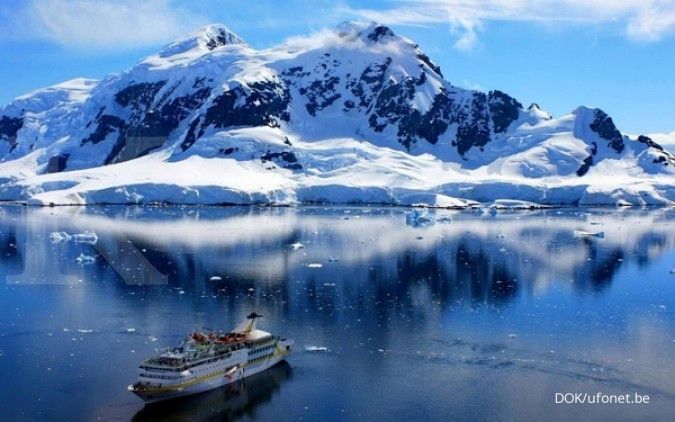KONTAN.CO.ID – MICHIGAN. The world’s largest ice sheet or glacier is predicted to collapse soon. However, new findings led by the University of Michigan suggest that the danger of sudden collapse is predicted to be less than previously thought.
Launch Phys Saturday (19/6/2021), a study published in Science also includes simulated deaths from West Antarctica’s Thwaites Glacier, one of the largest and most unstable glaciers in the world.
The researchers modeled the collapse of various heights of ice cliffs, the near-vertical formations that occur where glaciers and ice sheets meet oceans. They found that instability does not necessarily lead to rapid disintegration.
“What we found was that over long periods of time, ice behaved like a thick liquid, like a pancake spread across a frying pan,” said Jeremy Bassis, UM professor of climate and space science and engineering.
Also Read: Observations show humans can reproduce on Mars
He added that if the ice spread and thinned out more quickly, this could stabilize the collapse. “But if the ice sheet isn’t thinning fast enough, that’s when there’s a possibility of a faster glacier collapse.”
The researchers combined ice collapse and ice flow variables for the first time. They found that the stretching and thinning of ice, as well as the support of trapped ice chunks, could moderate the effects of fracture-induced sea ice cliff instability.
Also Read: The mystery of the earth’s core, getting tilted and cooling faster under Indonesia
The new findings add nuance to an earlier theory called sea ice cliff instability, which suggested that if an ice cliff’s height reached a certain threshold, it could suddenly collapse under its own weight in a chain reaction of ice fractures.
Antarctica’s Thwaites Glacier, often referred to as the “Doomsday Glacier”, is moving closer to this threshold and could contribute nearly 3 feet to sea level rise if a complete collapse occurs.
This doomsday glacier in Antarctica measures 74,000 square miles, roughly the size of Florida, and is highly vulnerable to climate and ocean changes.
Also Read: Earth’s impact is spinning faster: 2021 will be the shortest year in decades
The research team also found that icebergs that crack and fall from major glaciers in a process known as “iceberg calving” may actually prevent, rather than contribute to, catastrophic collapse.
If chunks of ice get stuck in outcrops on the ocean floor, they can put back pressure on the glacier to help stabilize it.
Bassis noted that if the glacier didn’t collapse massively, exposing the high cliffs could still trigger a retreat of several kilometers per year. This could make a major contribution to future sea level rise.
Also Read: The annular solar eclipse of June 10, can it be seen from Indonesia?
While it is clear that Thwaites and other glaciers are melting, the speed with which they die is of great interest to coastal areas as they develop strategies to adapt and build resilience.
But predicting the retreat of a glacier is a very complicated thing, because it is influenced by various factors that influence each other.
These factors include the pressure and tension of billions of tons of sliding ice, changes in air and water temperatures, and the effects of the flow of water on the ice.
As a result, predictions of the collapse of the Thwaites Glacier range from decades to centuries. The new study, Bassis said, is an important step towards producing accurate and actionable predictions.
“There is no doubt that sea levels are rising, and that will continue for decades to come,” Bassis said.
Also Read: Scientists surprised to find Earth spinning faster in 2020
“But I think this research offers hope that we’re not close to complete collapse—that there are steps that can reduce and stabilize things. And we still have a chance to change a lot of things by making decisions about things like energy emissions—methane and methane. CO2,” he explained as quoted from Phys.
Editor: Barratut Taqiyyah Rafie
– – – .


